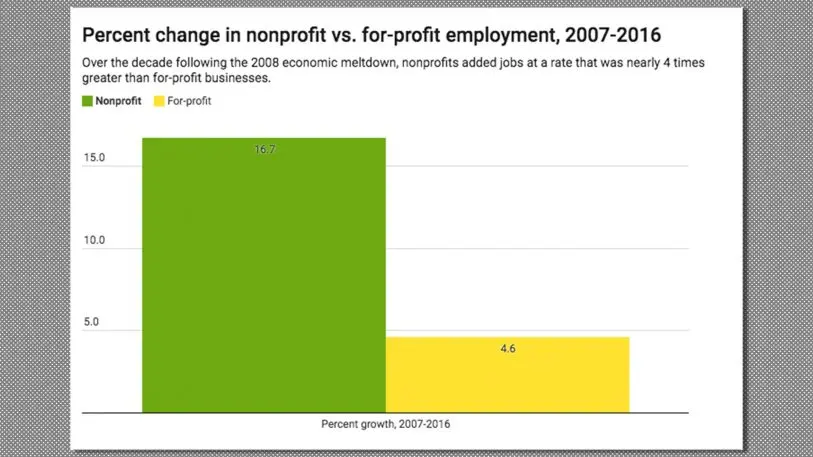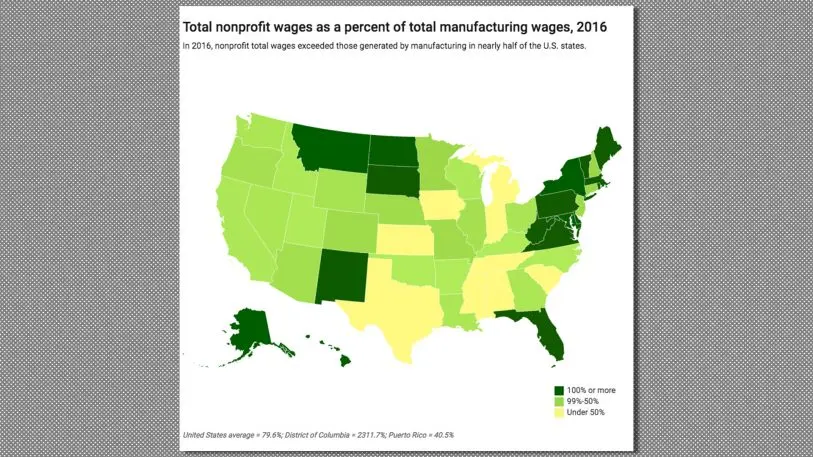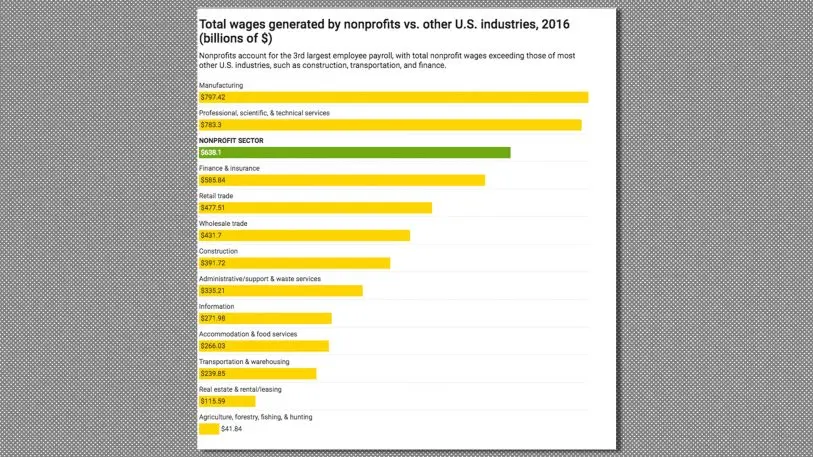Nonprofits are creating jobs at three times the rate of their for-profit counterparts, according to new data from the Johns Hopkins Center for Civil Society Studies. “If you look at the period over the last decade from 2007 right before the financial crisis and up to 2016, nonprofit growth in employment was almost 17 percent and the for-profit growth rate was under 5 percent over that 10 year period,” says Lester Salamon, the center’s director.

Nonprofits still make up around one-tenth of the total labor force, and have hired proportionately more people than for-profits in every state (along with Washington, D.C., and Puerto Rico) except North Dakota (where growth was tied). In fact, Johns Hopkins researchers have previous shown that the 12 million people employed by various social good organizations actually represent the country’s third largest employment base by category behind retail and manufacturing. New data shows the sector now has the third largest payroll base, too. The nonprofit sector generates about $638 billion in wages behind professional science and tech workers ($783 billion) and manufacturing ($797 billion). “In a little over half the states, it’s a bigger employer than all the branches of manufacturing combined,” says Salamon.

That’s important to the U.S. from an economic stability standpoint, and for ensuring a healthier society: Many workers operate in the healthcare, social services, and educational fields. Salamon sees these findings as a way to reinforce truths that many politicians often forget. Recent administration pushes to dismantle the Affordable Care Act or constrain Medicaid access don’t just hurt recipients, for instance, they will cost jobs, which will have its own ripple effect.

“There’s long been, particularly in conservative circles reaching back to Reagan, this belief that the nonprofit sector really is funded entirely or mostly by philanthropy,” Salamon says. But additional research shows that funding from individual donors and private and corporate foundations makes up just 10% of the overall income powering service and so-called expressive groups covering things like the arts, recreation, and civic organizations. “That means that 90% of that has to come from other sources, and a big chunk of that is from government,” he adds.
Recognize your brand’s excellence by applying to this year’s Brands That Matter Awards before the early-rate deadline, May 3.
